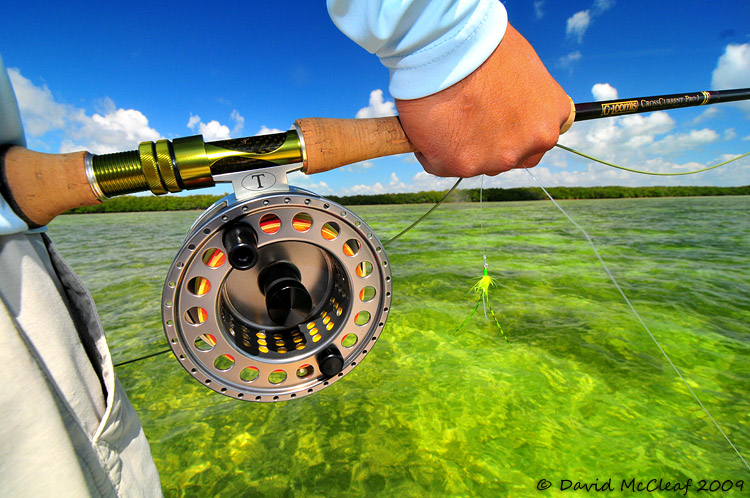Question-
Name: Chris Norton
Email Address: chris@mudhole.com
Subject: Fly fishing
Message: Hey Guys I have a few friends that have switched the backings on their reels from dacron to gel-spun. What is the big difference between the two? And what is your preference?
(Sent via Saltwater Experience Fishing Blog)
Answer-
Hi Chris,
Great question! There are actually a couple of answers to this one.
Old school flyfishermen will remember when the Billy Pate Tarpon was the reel of choice. It was bulletproof, but kind of heavy. The trend at the time was to have a short, wide reel to increase capacity. Reels were made smaller to decrease weight but there was a problem with capacity. Dacron was our choice of backing and it had a pretty big diameter for the strength. It was hard to get enough 30 pound backing on a reel to keep from getting spooled.
Seeking out new materials, we found that Gel Spun was far thinner for the pound test and we could get more capacity with this stuff. That solved a problem we were having but there were still other issues. With a reel like a Billy Pate Tarpon or an original Abel 4, the arbor was tiny. As the backing was dumped from the reel the diameter of the arbor went down fast. When the fish stopped running, we began collecting the line on a spool that was basically the size of a thread spool and we would frantically reel in line until the arbor size was increased to help collect more line on each revolution.
Soon reel design started to change. Some companies tried multiplying reels. While a multiplier was a great idea, they just didn't ever really take off. Abel came out with the 4N which was a narrow, taller model. The backing would build up the arbor size quickly and we could recover more line faster. Gel Spun also helped to allow the fish to run farther without decreasing the size of the arbor as much as Dacron.
Using this approach, we were just creating an artificial larger arbor reel with extra backing. Next came the Tibor reels that actually were large arbor reels and this changed reel design forever. Now, pretty much every reel is a large arbor and for good reason. They are a better design.
You could easily use Dacron on a modern reel and still be light years ahead of the way we used to have to do it, but with Gel Spun backing or simply braided line, you can get exceptional strength out of a tiny diameter. This means that you can use smaller, lighter reels to accomplish the same task, making casting an 11 weight feel like casting an 8 or 9 weight rod.
I now use braided line on my reels, but I use a pound test far more than I would ever need simply to stay attached to a fish. My tippet is usually around 20 pound test, the fly line breaks around 30 usually, but I routinely use 50-100 pound braided line. Why do I do this? I found that the super thin, 20 or 30 pound braided line was so thin that it was hard to handle with a fish on and actually could get buried in the spool if it was not wound on tightly enough. I moved up in pound test and never had another problem.
Using lighter or thinner diameter line will keep the already super large arbor of today's reels, much bigger, longer with a big run making it much easier to recover line fast.
I encourage the use of Gel Spun or braided line. I hope this answer helped you.
Let me know.
All the best,
Tom Rowland


